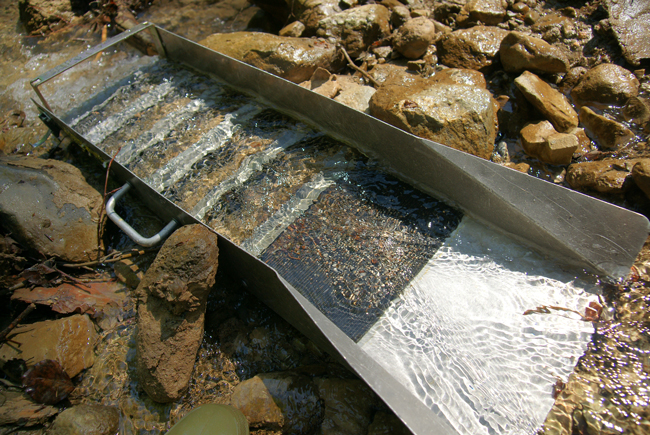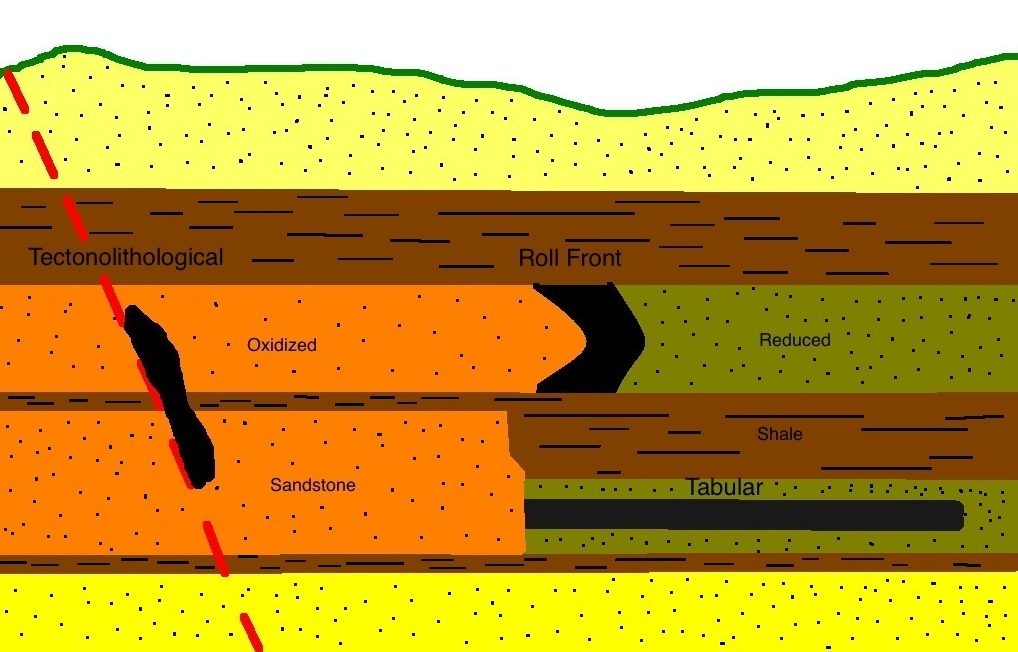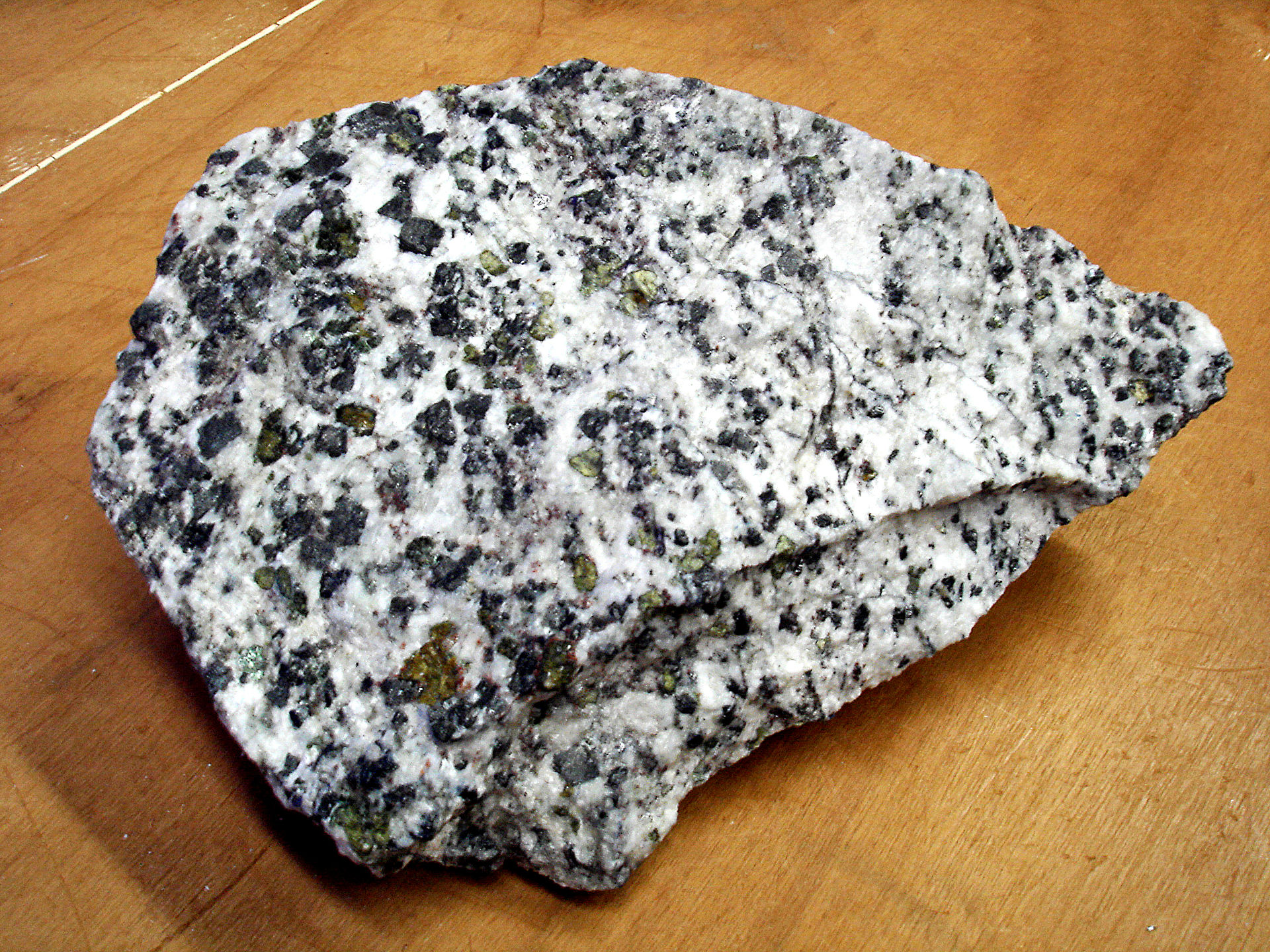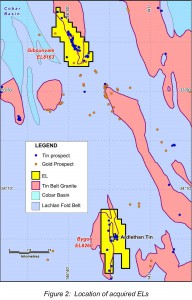 One of the joys of writing for this site, is that I get to research and discover new properties, companies and commodities that are outside my experience. In many cases a press release, scientific paper or news article will catch my eye and a once previously unknown region or deposit will expand my knowledge, and then I can share this new information with the community. A good example of this is the Bygoo Tin Deposit in New South Wales Australia, which I discovered while doing my research on the Tin market. Tin (Sn) which has a wide range of uses, especially in electronics has been a commodity with a very small set of suppliers. Famously Cornwall and Malaysia in the past and now dominantly Myanmar and Indonesia in the present, also small deposits have been found in Australia, Nova Scotia and a few other places in the world. The market is a small market, yet due to the lack of new production potentially a very lucrative one. As all the metals dropped this July, Tin registered a small gain, due to Indonesia protecting it’s market.
One of the joys of writing for this site, is that I get to research and discover new properties, companies and commodities that are outside my experience. In many cases a press release, scientific paper or news article will catch my eye and a once previously unknown region or deposit will expand my knowledge, and then I can share this new information with the community. A good example of this is the Bygoo Tin Deposit in New South Wales Australia, which I discovered while doing my research on the Tin market. Tin (Sn) which has a wide range of uses, especially in electronics has been a commodity with a very small set of suppliers. Famously Cornwall and Malaysia in the past and now dominantly Myanmar and Indonesia in the present, also small deposits have been found in Australia, Nova Scotia and a few other places in the world. The market is a small market, yet due to the lack of new production potentially a very lucrative one. As all the metals dropped this July, Tin registered a small gain, due to Indonesia protecting it’s market.
As mentioned before, there is a shortage of new material coming on stream, especially from stable jurisdictions, which is what makes Thomson Resources (ASX:TMZ) Bygoo Tin Project so interesting. It occurs next to a formerly operating Tin mine, which was the largest in New South Wales, at 50,000 tonnes of Tin of which 25,000 tonnes were mined between 1964 and 1986. The project itself consists of two tenements (claim blocks); one directly adjacent to the mine and one few kilometres away. The tenements are located in the Lachlan fold belt, a major early Paleozoic collisional orogen, better known as host for numerous Porphyry Cu-Au deposits. The Tin deposits themselves are spatially related to large post-orogenic fractionated silica rich intrusives (felsic granites) which form vein, porphyry and skarn Tin-Tungsten deposits.
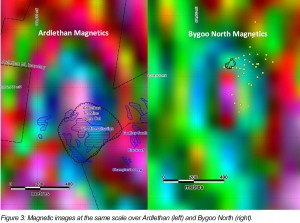
This is the dominant style of Tin mineralization around the world, with these Tin-Tungsten deposits being known from Nova Scotia, California, Cornwall and Malaysia. The alteration associated with these mineralizing events is very distinctive and termed “Greisen”, from the german word meaning “grey” in reference to the bleaching of the host rock. As the hydrothermal fluids are come from silica rich intrusions their mineralogy is quartz-muscovite dominant with topaz, tourmaline, flourite, Na or K feldspars, and apatite as accessory minerals. The tin and tungsten is hosted in wolframite-cassiterite minerals and generally the deposits are sulphide poor-oxide rich again reflecting the fractionation of the parent magma.
The key element to the Thomson narrative, lies on the second tenement, known as “Bygoo North”. Exploration on this tenement has been sporadic since the early 1970’s, with two generations of drilling outlining an small deposit. However, a comparison of the aeromagnetic signatures, between the mined deposit to the south and the tenement to the north suggests a very similar pattern of alteration and mineralization, where fluids have been concentrated around an apophysis, forming a distinct circular magnetic low around a prominent magnetic high. When past drilling was plotted against this interpretation, it was seen that most of the holes had missed the target, and the majority remained to be tested.
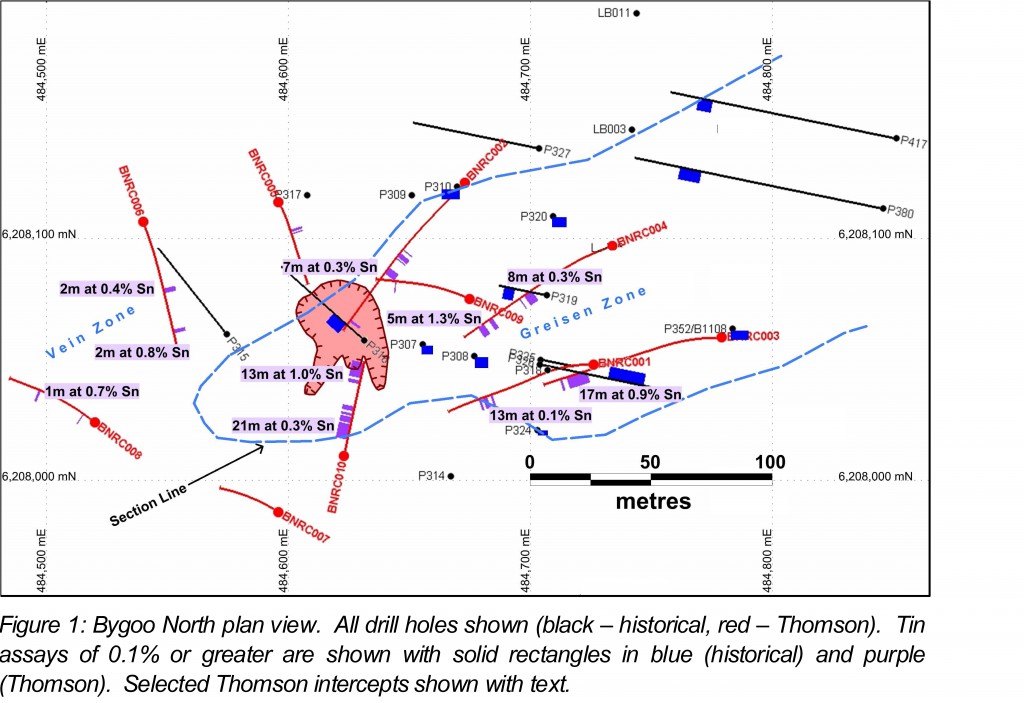
Not ones to sit on their duff, the company acquired the project in 2015 and has already commenced two rounds of drilling to test this hypothesis. The first round confirmed the grades of the previous drilling and deliniated two distinct zones. A vein zone with short intercepts of mineralization and a greisen zone with two distinct horizons. The vein zone located to the west of the deposit has short intercepts of which 2m at 0.8% is the best. The greisen zone with stacked horizons has longer intercepts and the newly discovered south limb is especially interested with an upper zone of 21 metres of 0.3% Sn and lower zone of 13 metres of 1.0% Sn. This prompted another revision of the geological model and refining of the hypothesis. The second round of drilling has ended as of the 29th of September, and trust your correspondent to be following the results of this round with great interest.
Subscribe for Email Updates

